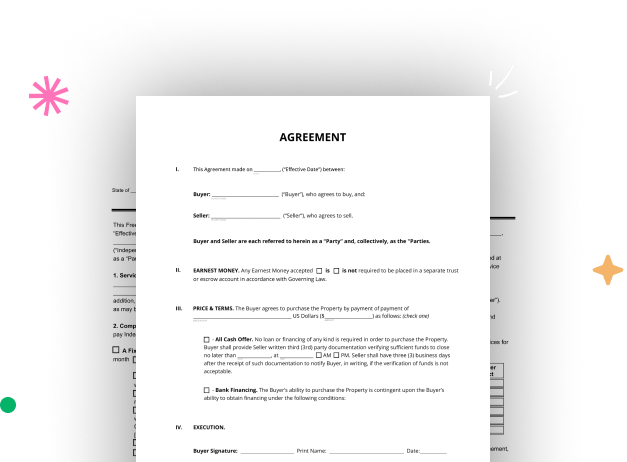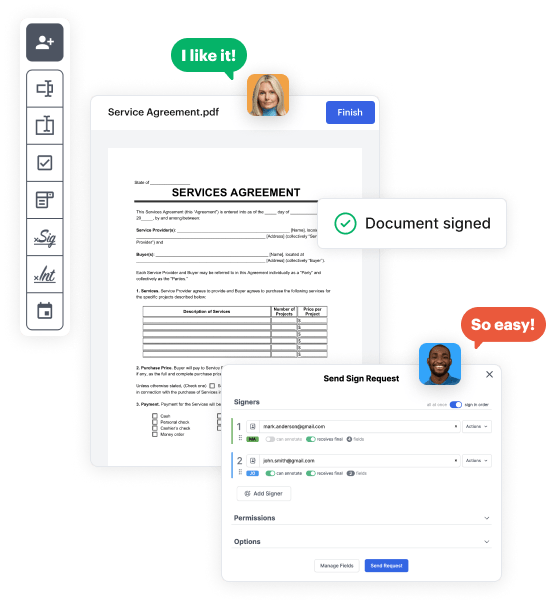

First, log in to your DocHub account. If you don't have one, you can simply register for free.
Once signed in, access your dashboard. This is your primary hub for all document-related activities.
In your dashboard, select New Document in the upper left corner. Opt for Create Blank Document to build the Court Judgment from a blank slate.
Add various items like text boxes, photos, signature fields, and other interactive areas to your template and designate these fields to specific individuals as necessary.
Personalize your template by inserting instructions or any other essential details leveraging the text option.
Carefully go over your created Court Judgment for any typos or needed adjustments. Leverage DocHub's editing features to polish your form.
After finalizing, save your file. You may opt to retain it within DocHub, transfer it to various storage options, or forward it via a link or email.